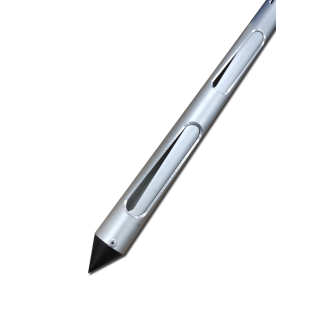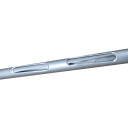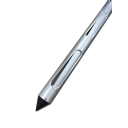Altair Plus Company provides warranty and after-warranty service and repair of products manufactured by the company. Warranty periods are indicated in the accompanying documentation and may vary depending on the type of product.
Payment is carried out according to the invoice issued by prior agreement with the manager of the company. You can pay an account at any bank or transfer money through another bank account.
Delivery across Ukraine of the goods ordered by you can be carried out by the cargo-transport companies “Delivery”, “SAT”, “Novaya Pochta”, “Night Express”. Delivery is carried out within 1-3x working days in the most appropriate way for a particular order at the expense of the buyer.
RP manual grain samplers are intended for taking grain samples in accordance with the rules of normative documentation (GOST 13586.3-83).
Samplers are widely used in grain processing and grain receiving enterprises, factories for the production of animal feed, and other agricultural organizations, including GHI - bodies that control the quality of bakery products, grain and flour.
Sampling of products using manual samplers can be carried out in grain storages and warehouses, in road transport and railway cars, as well as wherever grain products are stored / transported in bulk. The special design of the device allows you to receive samples from different levels of the entire grain layer in one dive. A multi-level fence provides a much more accurate assessment of grain quality than when taking images from a single point.
Samplers are used at grain reception and grain processing enterprises, feed mills, GCI, and other agricultural organizations. Designed for sampling grain in granaries, warehouses, motor vehicles, railway cars, etc.
RP grain samplers are made of several options, differing in the number of levels acceptable for the study, length and diameter 35 and 50 mm:
- RP-1.6x35 and RP-1.6x50 - 7-level (1.6 m);
- RP-2,1x35 and RP-2,1x50 - 10-level (2.1 m);
- RP-3,0x35 and RP-3,0x50 - 14-level (3.1 m).
A correctly selected manual sampler can take samples of grain products sprinkled with a layer of up to 1.5, 2 and 3 meters, respectively. Devices with a case diameter of 50 mm allow you to take a sample of approximately one and a half times more mass than 35 mm.
The main structural elements of the sampler:
- outer pipe (body);
- inner tube;
- cone-shaped tip;
- openings for sampling;
- a rotating handle with stops;
- hole for rashes of grain samples.
- inner tube;
- cone-shaped tip;
- openings for sampling;
- a rotating handle with stops;
- hole for rashes of grain samples.
The outer tube forms the body of the sampler and has a tapered tip. Its cylindrical wall separates the grain mass from getting inside. On the tubular surface of the body are openings-grooves of elongated shape, when opened, the grain can penetrate into the internal cavity. The hole location line surrounds the outer pipe spirally for about half a turn.
The inner tube forms a container for the grain sample. Its walls help close the openings of the housing by overlapping them. The inner pipe also has openings that coincide in shape with the grooves of the body, but have a different slope (the opposite direction of the groove holes serves to take samples “diagonally”). Such a fence protects the samples from damage to the grains, which could be caused by pinching between the moving parts of the sampler. The difference in the slope between the holes eliminates the coincidence of the edges of the grooves of the outer and inner pipes. Their edges move relative to each other so that the individual particles of the sample are displaced, avoiding pinching, deformation or cutting.
A smooth conical tip forms a point, facilitating the insertion of the sampler body into the test grain mound by moving its particles apart.
The handle movably connects the outer and inner pipes. This sampler element has a thrust mechanism with two positions. When the handle is rotated around the axis, the inner pipe rotates in the housing, thereby closing and opening the intake grooves is obtained. To extract the grain sample from the sampler into the container for storing grain samples at the end of the handle there is a special hole.
You can buy hand-held samplers for grain produced by Altair Plus PE using the contact details of the company on the Contact page.
The main technical characteristics of the RP type hand-held sampler:
Samplers with a diameter of 35 mm:
| РП-1,6х35 | РП-2,1х35 | РП-3,0х35 | |
|
Length, mm
|
1600
|
2100
|
3100
|
|
Depth of sampling, mm
|
1400 | 1900 | 2900 |
| Diameter, mm | 35 | 35 | 35 |
| Diameter of the internal cavity, mm | 26 | 26 | 26 |
| Number of sampling holes | 7 | 10 | 14 |
| Sample weight, g | 600 | 900 | 1300 |
| Weight, kg | 1,4 | 1,8 | 2,5 |
Samplers with a diameter of 50 mm:
| РП-1,6х50 | РП-2,1х50 | РП-3,0х50 | |
| Length, mm | 1600 | 2100 | 3100 |
| Depth of sampling, mm | 1400 | 1900 | 2900 |
| Diameter, mm | 50 | 50 | 50 |
| Diameter of the internal cavity, mm | 41 | 41 | 41 |
| Number of sampling holes | 7 | 10 | 14 |
| Sample weight, g | 950 | 1400 | 2000 |
| Weight, kg | 2,2 | 2,8 | 3,9 |
The list of actions when taking grain samples with a manual sampler RP:
- Close the intake holes by turning the handle in the corresponding direction until it stops around the longitudinal axis of the device.
- Immerse the device forward with a tapered tip to the desired depth in the embankment of grain.
- Close the intake holes by returning the handle to its original position (from the 1st item on the list).
- To extract, filled with samples from different levels, the device from the test product.
- Pour the taken grain sample through the hole at the end of the handle into the sample container (KHOZ), turning the RP sampler up with a conical tip.
- Close the intake holes by turning the handle in the corresponding direction until it stops around the longitudinal axis of the device.
- Immerse the device forward with a tapered tip to the desired depth in the embankment of grain.
- Close the intake holes by returning the handle to its original position (from the 1st item on the list).
- To extract, filled with samples from different levels, the device from the test product.
- Pour the taken grain sample through the hole at the end of the handle into the sample container (KHOZ), turning the RP sampler up with a conical tip.
To speed up the process of filling the inner cavity with grain, it is allowed to raise and lower the device several times with a small amplitude along the longitudinal axis.


























